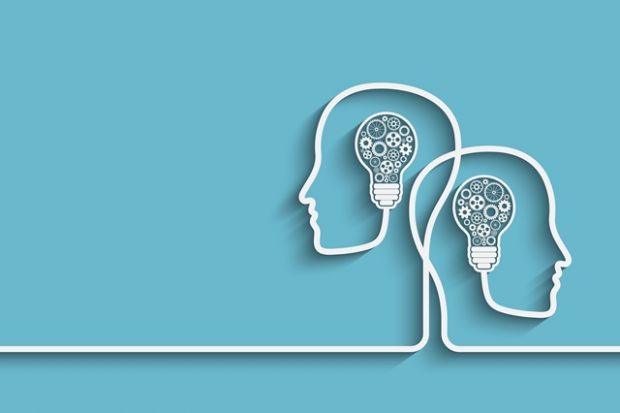We can consider the posture of teachers and those of students as a kind of “face to face” with different goals and different motivations, varied strategies … It can be seen as a meeting with modalities that we build together …
We know all the interest of qualifying this point and of being able to vary the postures, to diversify the methods, the supports …
Learning is fundamentally the role of the pupil, although we all know that we are constantly learning as a teacher or educators.
Teaching is essentially that of the teacher, although we also know the richness and efficiency of practices using students as “teachers” in various situations.
Two verbs from the world of teaching and education
The illustration is taken from the slides of the conference by M. Lebrun, Third conference of the Pedago-Tic cycle at the Mundaneum on the theme “Learning and teaching”
Two verbs that directly belong to the world of teaching and education and whose meaning of each question the meaning of the other.
Learning and teaching may have been relatively distinct in the past – a teacher taught his student, who learned from his teacher – but today are two inseparable concepts in constant interaction.
Communication technologies, access to information, among others, transform the relationship to knowledge. Teaching today is no longer – or no longer just – transmitting information but rather provoking learning. In this, we can say that the teacher, well beyond transmitting, rather plays a role of “ master ”.
The body of knowledge in all fields is constantly increasing and changing, as are the means of teaching. The teacher, therefore, learns himself by teaching.
For the students, learning is also and more and more done in interaction with others (cognitive conflict – group work – teaching by peers or “ Peer instruction ” – networking, etc.)

We seek more and more often to make learners aware of their forms of intelligence, of the strategies that suit them ( metacognition ), to make them actors or at least part-stakeholders of their learning.
The learner teaches and “teaches himself” more and more frequently.
According to Denis Christol ( Learning and teaching, what differences? Publication of his blog of 15 May 2015 ): “Learning is welcoming content which we assume will be useful to us to resolve some of the questions we ask ourselves about the world and ourselves. The desire to learn corresponds to the desire to modify the dimension of our mental world and our relationship with the world around us. In this sense, our desire to learn is directly proportional to our desire to grow internally, and that of expanding our field of action externally.
Teaching is making room for the other to grow, presenting them with some of the discoveries we have made along our journey. In this sense, teaching is always telling a story in which we are the main character, being aware that now and here it is another character. “
To know more :
Extremely rich file (bilingual Fr-En) on the relationship Learning / Teaching in perspective with the ethics of the teaching profession, Learning and Teaching today in the Journal of the Quebec interdisciplinary pedagogical council (fall 2012 Volume 2 No 1)
Video of the Conference by Marcel Lebrun. Learn and teach in the digital age. The conference has given during TICE Alpes 2012 (Grenoble, June 28 and 29, 2012), Temps de la Technologie, temps de la pedagogy.
Video by Marcel Lebrun. Interactive 2014: Digital culture and new learning methods. Conference ( InterTice 2014 ) on Hybridization: MOOCs and Flipped Classrooms.

Learning styles (by René Cahay, Maryse Honorez, Brigitte Monfort, François Remy, Jean Therer), LEM (Multimedia Teaching Laboratory of the University of Liège).
“ Teach and learn. Growth spaces ”. Sá Maria Teresa, Enfances & Psy3 / 2002 (no19), p. 146-150.
Learning and teaching, what are the differences? Learn differently. Blog of Denis Cristol, Publication of May 15, 2015.



